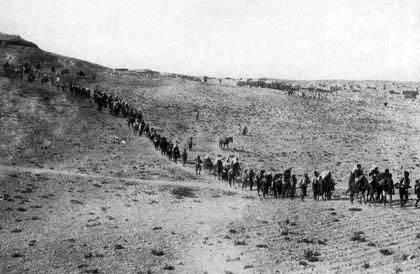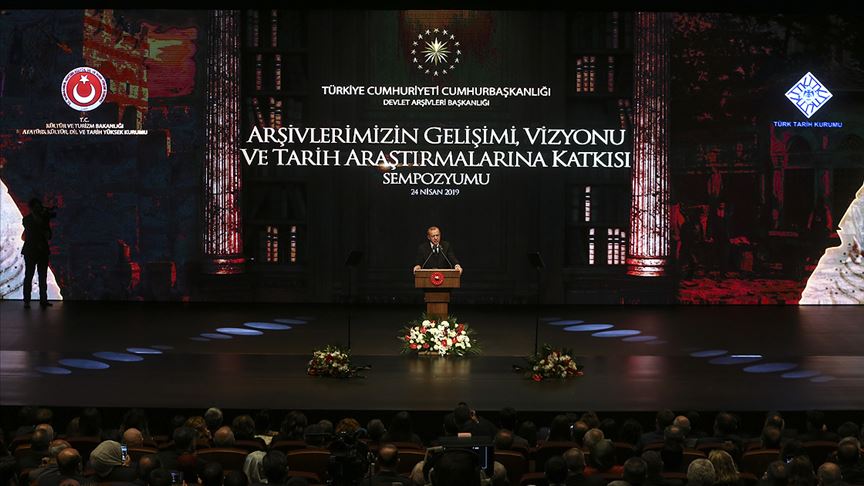The Armenian government can learn from the lessons of Georgia and elsewhere. For three decades, neoliberal policies did not bring happiness. To imagine solving Armenia’s problems by attracting foreign investments will fail.
On every weekend since December 8, 2018, thousands of people take to the streets of Belgrade in protest Serb President Aleksandar Vucic. Demonstrators accused the Serb president of corruption, stifling of press freedom, and violence against those against him. The demonstrations continued throughout December and January of the next year. Serbia witnessed a non-violent revolution in October 2000 that overthrew the autocratic ruler Slobodan Milosevic, in the name of democracy and anti-corruption. Why do Serbians demonstrate for the same reasons 18 years later?
Serbia is not an exception. Take Ukraine for example. In 2004 it went through a gigantic political upheaval known as the “Orange Revolution” whereby thousands of people gathered at Maydan, the central square in Kiev. They protested against the falsified elections that named the corrupt Victor Yanukovich the winner. Ukraine’s peaceful revolution was a success, but Yanukovich nevertheless returned to power as prime minister in 2006, and became president in 2010. His policies triggered yet another revolution in 2014 (much more violent one, with Russia occupation of Crimea and armed conflict in Donbass) overthrew Yanukovich a second time. Yet, corruption in Ukraine is still to be resolved. Kyrgyzstan, a country in Central Asia, went through a similar cycles: its first president Askar Akaiev accused of nepotism and corruption was overthrown peacefully in 2005. His successor, Kurmanbek Bakiyev proved to be even more corrupt and undemocratic. When large number of people protested against him in 2010, he did not hesitate to order his forces to open fire. In spite of casualties, Bakiyev was overthrown nevertheless. Like Kyrgyzstan, Georgia had a peaceful revolution in 2003, yet neither transparent elections are achieved, nor the issue of corruption in public sector is resolved.
Armenia’s second revolution
Armenia’s revolution in 2018, in the name of democracy and anti-corruption, was not its first; the country had already seen a non-violent regime change in 1989, still a Soviet republic. Under popular pressure, the local Soviet nomenklatura left power to the Karabakh Movement that was composed by Yerevan intelligentsia. Therefore, in Armenia too we have already a second revolution in the name of democracy, free and fair elections, and governance without corruption. Will the new revolutionaries achieve their publicized aims?
The above examples testify that there are structural reasons not only to why revolutions happen, but also for their failures. In fact, we have two sets of reasons for the failure of the examples mentioned above: the nature of a revolutionary process, and the specific conditions of post-socialist transition. A revolution produces a polarized situation, antagonism and harsh competition that favour the emergence of a centralized power. Traditionally, revolutions have led to powerful states but rarely to democracy. This later is a process is built on decentralization of power necessary to create checks and balances. It does not matter whether revolutionaries shout out loud that they are for democracy, if they hold power alone then sooner or later they become autocrats.
If we consider the result of the Armenian parliamentary elections of December 2018, then we see exactly this concentration of power. Only three parties share the 132 seated parliament, yet the party of the prime minister My Step Alliance dominates as it won 70% of the votes and 88 seats, Prosperous Armenia party of oligarch Gagik Tsarukyan got 8.2% and 26 seats, and Bright Armenia got 6.3% of the votes and 18 seats. The fact that the old ruling Republican Party, and the traditional Armenian Revolutionary Federation (Tashnag Party) received less than the necessary 5% shows how under-developed political party building has remained after 28 years of independence. This fact is even more dramatic, as after the 2015 constitutional reforms Armenia is a parliamentary republic, and therefore the executive is issued from the forces represented in the parliament.
The natural tendency will push My Step Alliance of Prime Minister Nikol Pashinyan to replace the old Republican Party as the party of the state administration. This is one of the most negative consequences of Soviet legacy, where the ruling Communist party monopolized political power and dominated over the state. The other Soviet legacy is that no differentiation existed between the political power and economic power. This differentiation is essential in order to have political differentiations, and a social basis for political competition. In other words, Pashinyan’s party will not only take over the state institutions, but also merge with the business class. This is bad news not only for those interested in democracy in Armenia, but also for fighting corruption. How is it possible to fight corruption when those deciding the rules, those executing them, and those profiting from them are the same?
The picture becomes even more pessimistic when one takes into consideration that the three parties in the parliament are of liberal ideology, voluntarily reflecting the interests of business classes. Who represents the interests of the rural unemployed? Or, mine workers? Or the students who played key role in the revolution? When the Soviet Union collapsed in 1991 there was a strong necessity to cut down the totalitarian state, to privatize the economy, hoping that the emerging middle classes will provide a social base for parliamentary democracy. Yet, we still feel the damage done by the Soviet regime by suffocating the autonomy of civil society; still the state is the prime actor both in politics and in economics, and only those forces that capture the state have power.
The failure of past popular revolutions does not mean that history needs to repeat itself. Human beings have the capacity to learn from the past. One evident reason for the failure of the Georgian revolution was unpopular social policies. Mikhail Saakashvili had won landslide elections in January 2004 with 96% of the votes, yet his damaging social policies led to massive opposition demonstrations in downtown Tbilisi in November 2007. The Armenian government can learn from the lessons of Georgia and elsewhere. For three decades, neoliberal policies did not bring happiness. To imagine solving Armenia’s problems by attracting foreign investments will fail. What Armenia needs is export oriented approach to create jobs in mountainous, rural areas, in former Soviet industrial cities left to their fate, something foreign investments seeking quick profit will refrain from. Armenia needs redistribution most of all. Only then will part of the population that supported the revolution will stay loyal to its political leadership.




